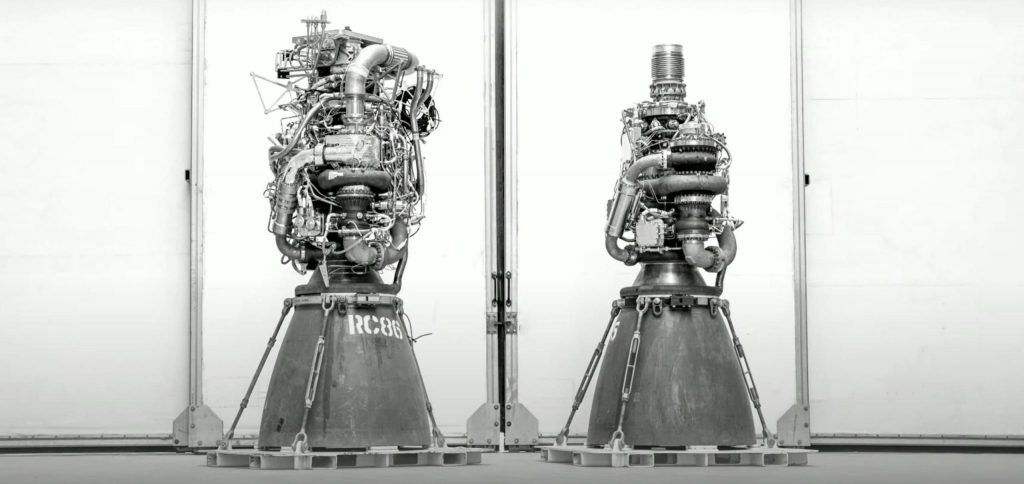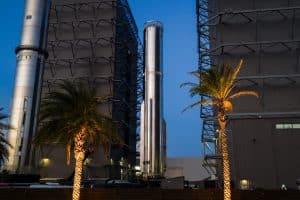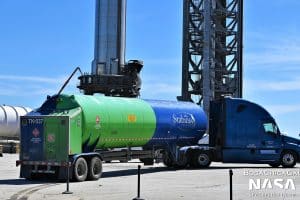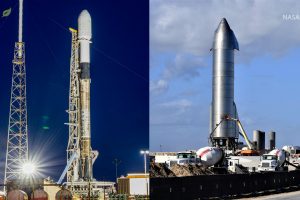A day after revealing the completion of the 200th Falcon upper stage and Merlin Vacuum engine, SpaceX has announced that it also recently finished building Starship’s 200th upgraded Raptor engine.
Starship – and Raptor, by extension – has yet to reach orbit and is likely years away from scratching the surface of the established success and reliability of the Falcon upper stage and MVac. But compared to MVac, Raptor is more complex, more efficient, more than twice as powerful, experiences far more stress, and is three times younger.
And Raptor 2 isn’t the first version of the engine. Before SpaceX shipped its first Raptor 2 prototype, it manufactured 100 Raptor 1 engines between the start of full-scale testing in February 2018 and July 2021. By late 2021 or early 2022, when Raptor 2 took over, the total number of Raptor 1 engines produced likely reached somewhere between 125 and 150 – impressive but pale in comparison to SpaceX’s Raptor 2 ambitions.
From the start, Raptor 2’s purpose was to make future Raptors easier, faster, and cheaper to manufacture. The ultimate goal is to eventually reduce the cost of Raptor 2 production to $1000 per ton of thrust, or $230,000 at Raptor 2’s current target of 230 tons (~510,000 lbf) of thrust. As of mid-2019, Musk reported that each early Raptor 1 prototype cost “more” than $2 million for what would turn out to be 185 tons of thrust (~$11,000 per ton). It’s not clear if that ever appreciably changed.
In response, SpaceX strived to make Raptor 2 simpler wherever possible, removing a large part of the maze of primary, secondary, and tertiary plumbing. In 2022, CEO Elon Musk confirmed that SpaceX had even removed a complex torch igniter system for Raptor 2’s main combustion chamber. All that simplification made Raptor 2 much easier to build in theory, and SpaceX’s production figures have more than confirmed that theory. Despite those simplifications, SpaceX was also able to boost Raptor 2’s thrust by 25% by sacrificing just 1% of Raptor 1’s efficiency.

Beginning with its first delivery in February 2018, SpaceX produced the first 100 Raptor 1 engines in about 36 months. In the first 11 to 12 months of Raptor 2 production, SpaceX has delivered 200 engines. That translates to at least six times the average throughput, but the true figure is even higher. In June 2019, Musk stated that SpaceX was “aiming [to build a Raptor] engine every 12 hours by end of year.” As is usually the case, that progress took far longer to realize. But in October 2022, a senior NASA Artemis Program official revealed that SpaceX recently achieved sustained production of one Raptor 2 engine per day for a full week.
Such a high rate – likely making Raptor one of the fastest-produced orbital-class rocket engines in history – is required because SpaceX’s next-generation Starship rocket needs a huge amount of engines. The Starship upper stage currently requires three sea-level-optimized Raptors and three vacuum-optimized Raptors, and SpaceX has plans to increase that to nine engines total. Starship’s Super Heavy booster is powered by 33 sea-level Raptors.

Orbital-class versions of Starship and Super Heavy have never flown, let alone demonstrated successful recovery or reuse, so SpaceX has to operate under the assumption that every orbital test flight will consume 39 Raptors. Even after the reuse of Super Heavy boosters or Starships becomes viable, taking significant strain off of Raptor demand, SpaceX wants to manufacture a fleet of hundreds or even thousands of Starships and a similarly massive number of boosters. To outfit that massive fleet, SpaceX would have to mass-produce orbital-class Raptor engines at a scale that’s never been attempted.
But it will likely be years – if not a decade or longer – before SpaceX is in a position to attempt to create that mega-fleet. If the Raptor 2 engines SpaceX is already building are modestly reliable and reusable, and it doesn’t take more than 5-10 orbital test flights to begin reusing Starships and Super Heavy boosters, a production rate of one engine per day is arguably good enough to support the next few years of realistic engine demand.
SpaceX’s first orbital Starship launch attempt could occur as early as December 2022, although Q1 2023 is more likely. SpaceX currently has permission for up to five orbital Starship launches per year out of its Starbase, Texas facilities and will likely try to take full advantage of that with several back-to-back test flights in a period of 6-12 months.





